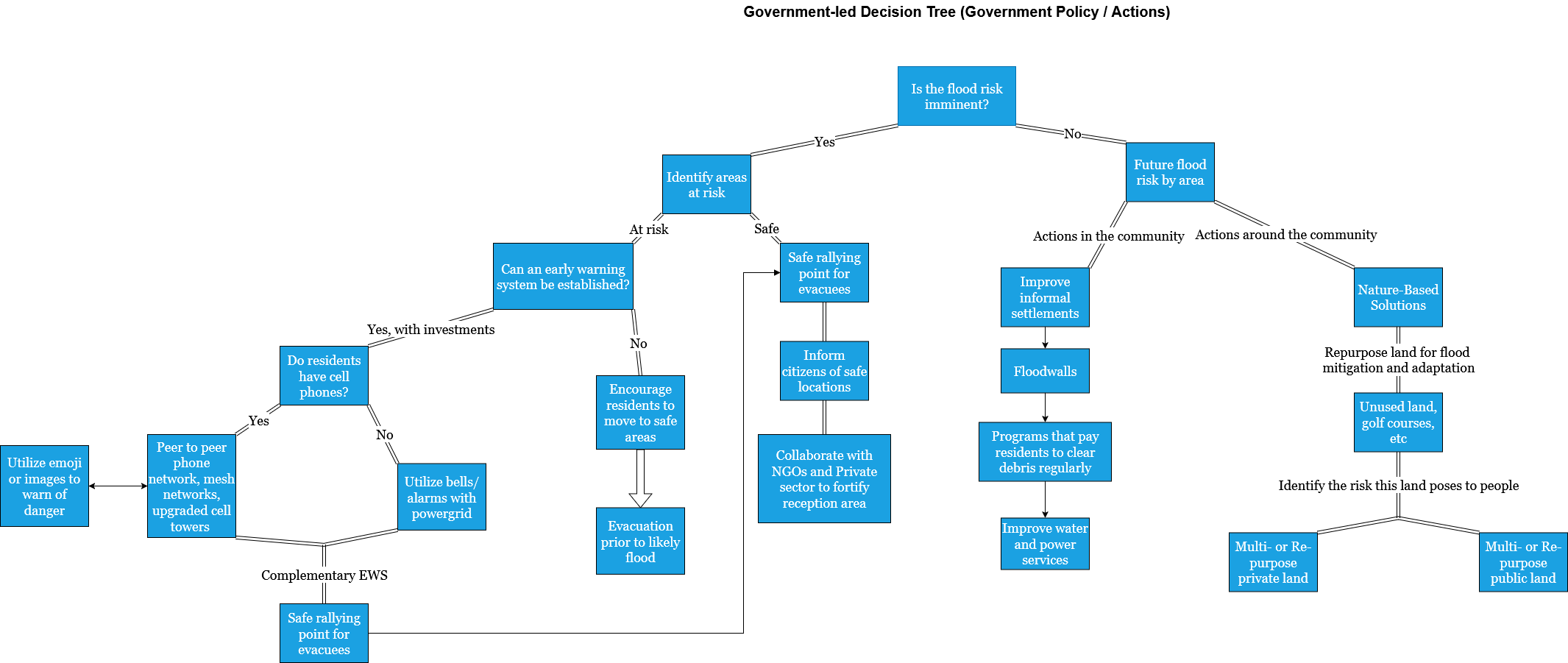Stream 4 Policy, Awareness & Outreach - Results
Workstream Goal
Apply policy-relevant reporting and guidance, awareness and outreach including early warning system information, disaster risk reduction, adaptation and resilience to relevant stakeholders including policy makers, public safety, and settlement community members.
Results
Audience Types
Due to hackathon time constraints we have only considered two main groups of stakeholders:
- “Community Leaders” - authoritative members of the public residing in the informal settlements, who are or may be affected by disasters such as flooding
- “Policy Makers” - government, NGO and related organizations who wish to develop effective policies to better inform and empower the community leaders and settlement inhabitants about the disaster risks and how to adapt and become more resilient.
Policy Decision Trees
- We decided to turn the settlement growth and flood risk content into relevant policy and communications material via “policy decision trees”, which are affected by whether the flood risk is imminent or a future danger.
- Divided into two categories
- Government-led decisions
- Community-led decisions (with or without government support)
-
These are a work in progress and reflect a high-level understanding of potential relevant policy actions
-
We note that certain government-led policies that could apply - such as those relating to mandatory evacuations and resettlements - are controversial and may well be resisted by informal settlement community leaders and members.
-
We are not advocating for or against any particular policy steps or approach, simply indicating via these decision trees how policy actions could apply to the settlement detection, growth, and flood risk prediction models we produced.
-
Government-led Decision Tree:

Audience-focused Content Publishing
- These audiences have different needs and so we created two static websites to focus on each type of audience separately.
- We chose web templates that are mostly static but allow some dynamic elements to improve usability and allow data refreshing. We chose the Astro framework for this purpose.
- In addition, we focused on very low-tech, streamlined themes to ensure they loaded quickly and properly on a variety of mobile and desktop devices, and in low bandwidth settings.
- The code and content for the websites can be found inside the relevant subfolder in the “\4_policy_awareness_outreach\user” folder.
- You can view a live version of the websites here:
- “Community Leaders” live microsite. We partially translated the content into isiZulu in recognition that in our use case the Durban population speaks English and isiZulu. You can toggle between the languages on the top righthand corner.
- “Policy Makers” live microsite
Related reading
- View the Policy, Awareness & Outreach Hackathon Activity Log.
- View the overall results.
